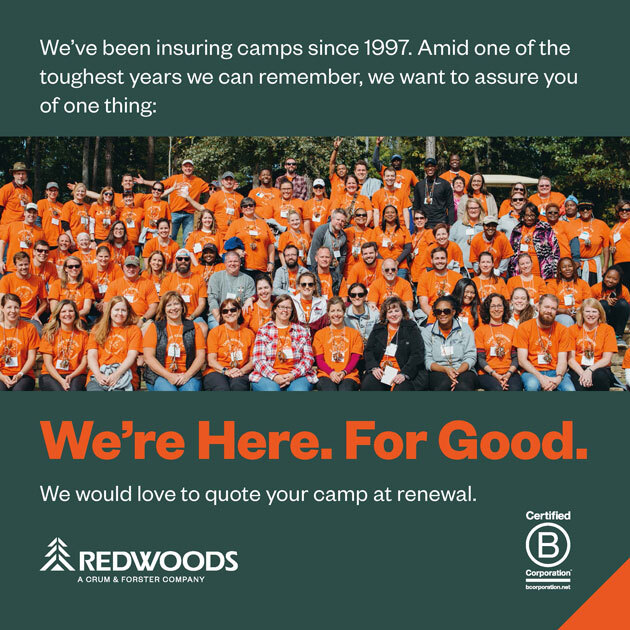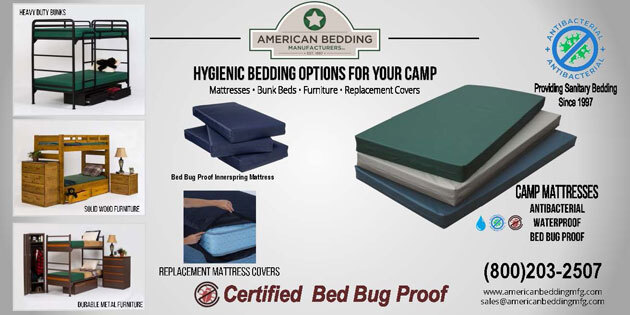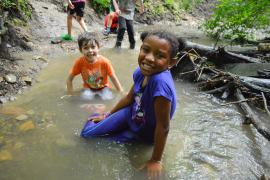It was the spring of 2016 when I received a call from the current director of Many Point Camp in Minnesota. Having been the director of Many Point for 25 years, I was used to a call inviting me to the camp staff’s opening banquet. But this call was different, as current Many Point Director Evan Yingst reminded me that this was the year camp was scheduled to open the 40th anniversary time capsule that I had buried in 1986. He wanted me to be there when they dug it up and then make a presentation at the banquet.
My mind raced back to 1986, my sixth year as the camp’s director. I tried to remember what we had put in that time capsule. Yingst shared with me that the camp staff, too, was very curious and excited to see what had been lying under a visible marker on the grounds all those years.
In 1986, as Many Point’s 40th Anniversary approached, I worked to design an activity that would involve all the campers in the celebration. It was then I remembered my own involvement in a time capsule project when I was 11 years old. I thought back on how fun it was to ponder what the future would be like when people opened the capsule. So, burying a time capsule became part of the Many Point anniversary program. We knew including memorabilia and records from the summer of ’86 would be fun, but what came to be viewed as the most important items preserved therein were cards that every camper, staff member, and guest would fill out. The card would ask three questions:
- What were your favorite activities this summer?
- What do you think camp will be like in the year 2016?
- What do you think the world will be like in the year 2016?
Campers from every session, staff at the end of the summer, and all visitors to camp were given the opportunity to fill out a time capsule card.
During my 37-year professional camping career, and as a volunteer since I’ve retired, I’ve been involved in seven time capsule programs. I made a point of reading all the cards going into each of the capsules. The most common predictions about the future involved improvements in camp equipment and cabins, improvements in mosquito abatement, and the future common use of jet packs. There were some rather accurate predictions, too, like the 1986 camper who said, “[In 2016] we will be carrying computers around in our hands.” But the most gratifying comments, and the primary reason for including a time capsule program at camp, were the optimistic and positive dreams campers had about the future. I was always impressed by their seriousness and the depth of thought the campers put into their answers.
Throughout a session, I would often hear campers talking with peers and mentors about their ideas. I was privy to many wonderful conversations between campers and staff. I always had the hope — and would include in my closing campfire comments — that campers would come to understand that they, now, would play an important role in making their future dreams come true.
Burying a time capsule can be an entertaining and easy activity to mark an anniversary or special event, with the main purpose being to encourage campers, staff, and guests to think about what they value about the camp experience and their communities today — and what they dream about for the future.
Keys to a Successful Time Capsule Program
Pay attention not only to what you place in your time capsule, but also how you preserve it. To ensure a successful program, follow these practices.
- Choose a place where future camp visitors will easily see the time capsule’s location marker.
- Mark the time capsule site with a post and metal plate that tells what it is and when it should be opened.
- Secure the site from early opening (with concrete and a boulder).
- Use archival techniques including putting items in polypropylene bags, printing cards on acid-free card stock, and using moisture removal packets.
- Use a durable container as your time capsule, such as an eight-gallon Rubbermaid Action Packer, and protect it in a treated wooden box.
Creating a new time capsule every 10 years can be a great way to promote your camp and encourage former campers and staff to stay active in your camp’s community. Be sure to publicize when you intend to open the time capsule. Thirty years is a reasonable amount of time. Too long and camper comments become science fiction. Campers and staff will enjoy imagining being back at camp for the big reveal when it’s opened.
Possible Items to Include in a Time Capsule
You can use your imagination and encourage further camper participation by asking for ideas about what to include in your time capsule, but here are some items to consider:
- Time capsule cards from campers, staff, and visitors, including their names, ages, and cities/states
- Camp promotional material, program schedule, and menu
- Staff guide, roster, and training outline
- Camp budget
- Camp store items
- Photos
- “Letter to the future” from the camp director including current challenges and dreams
- Newspaper of the day when buried
- Current popular music CDs and movie DVDs
- Pop culture magazines (i.e., People, teen magazines)
- “Special Edition” magazines (i.e., Time/Life)
- Hostess Twinkie (it will be fun to see if it survives; the rumored shelf life is quite long)
Photo courtesy of YMCA Camp Icaghowan, Amery, Wisconsin.
Bob Gagner was the director of Many Point Camp, YMCA Camp Icaghowan, and several day camps for a total of 37 years. He was committed to developing programs that had a purposeful link to the camp’s mission and training camp staff to understand their role in making that happen. Bob retired in 2015 and continues to act as a mentor and advisor to camps. He is active with ACA as a standards visitor and trainer. Bob is happy to share more information on time capsule programs at [email protected].




